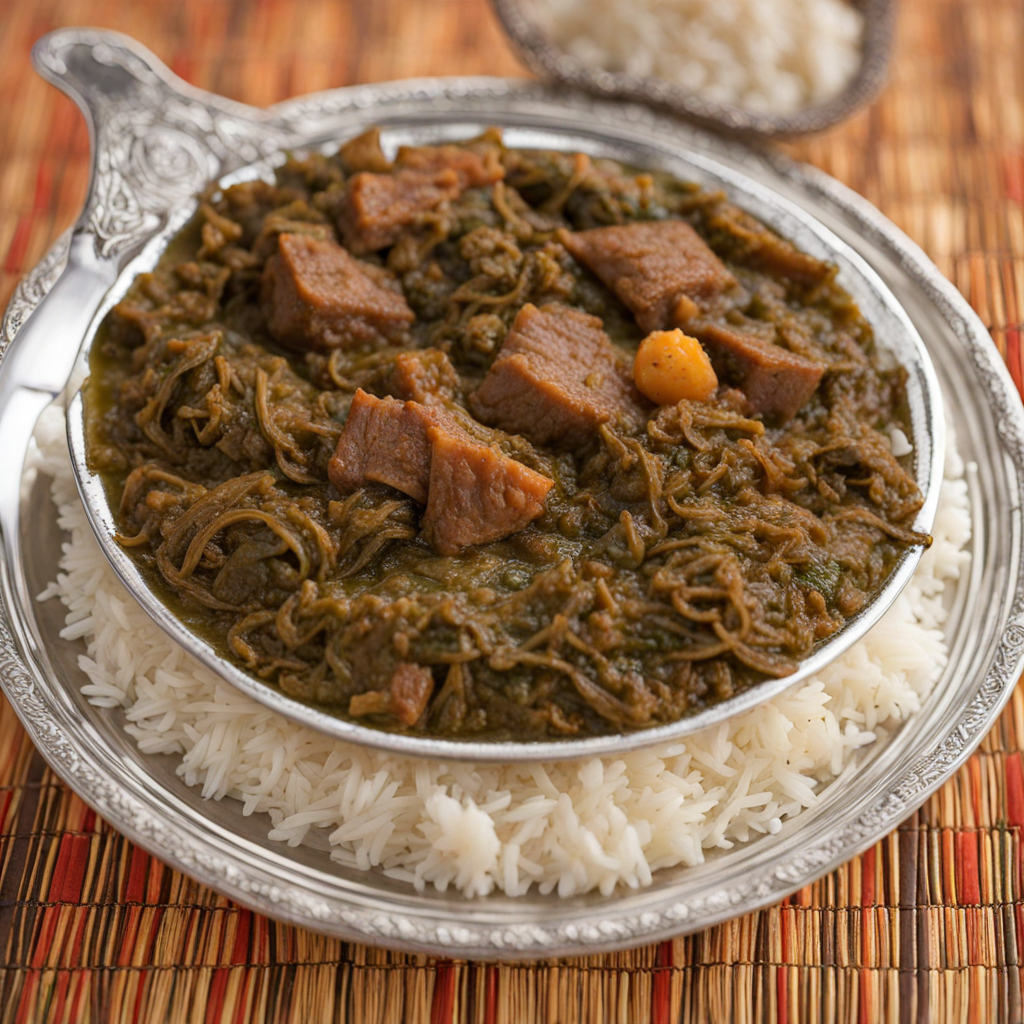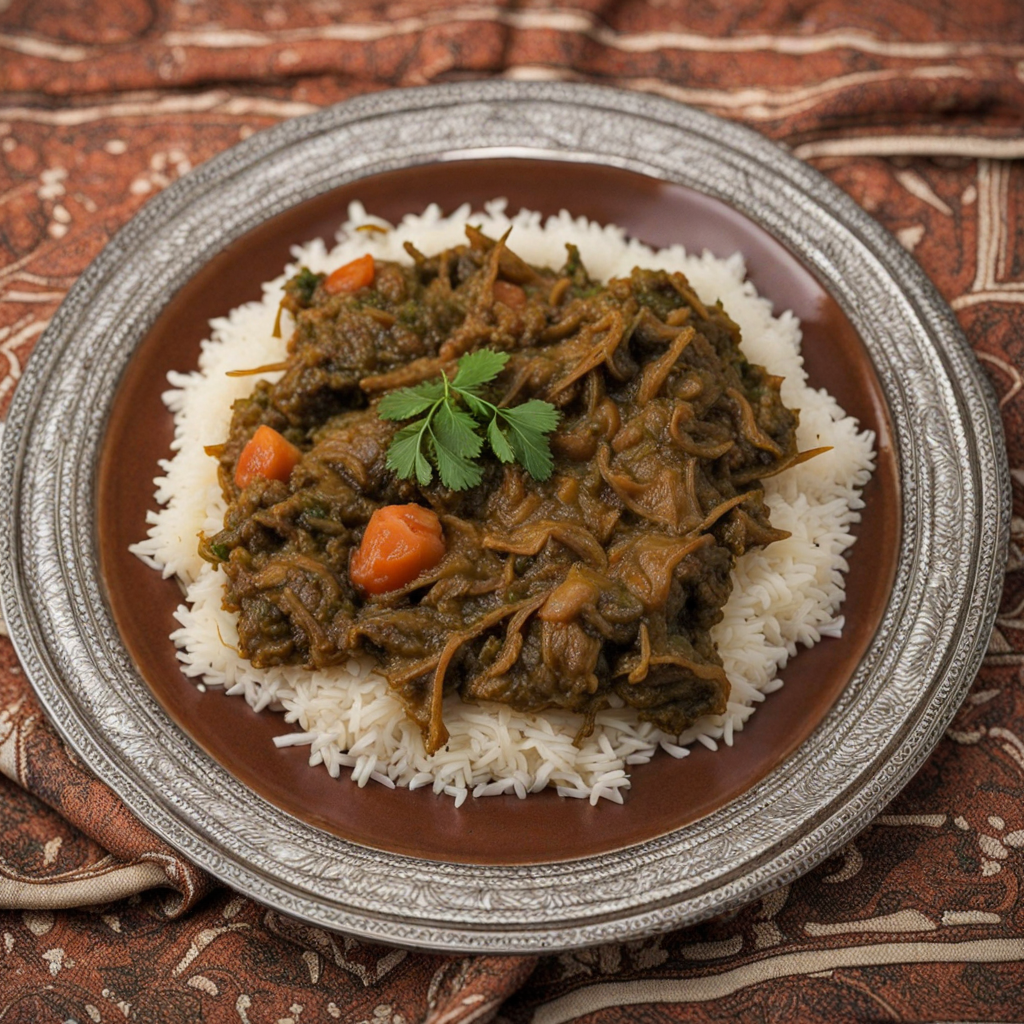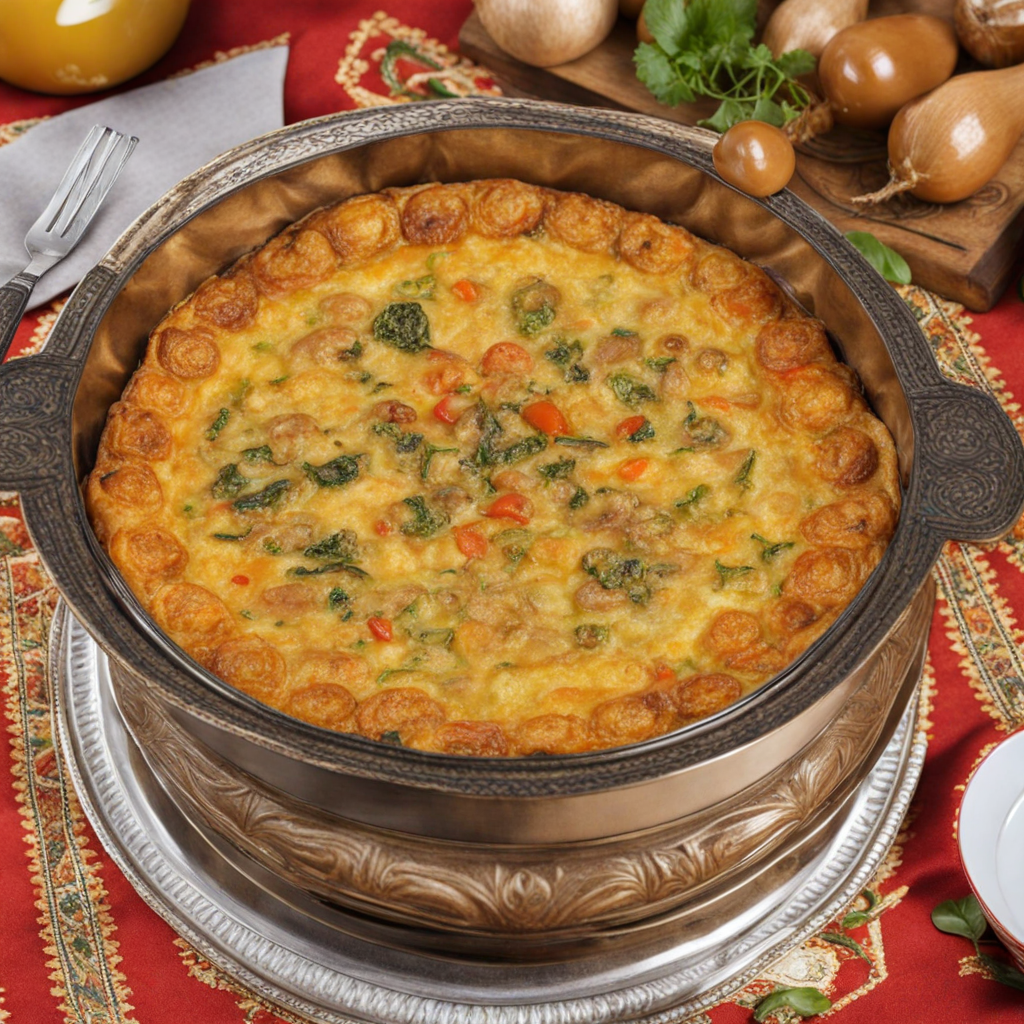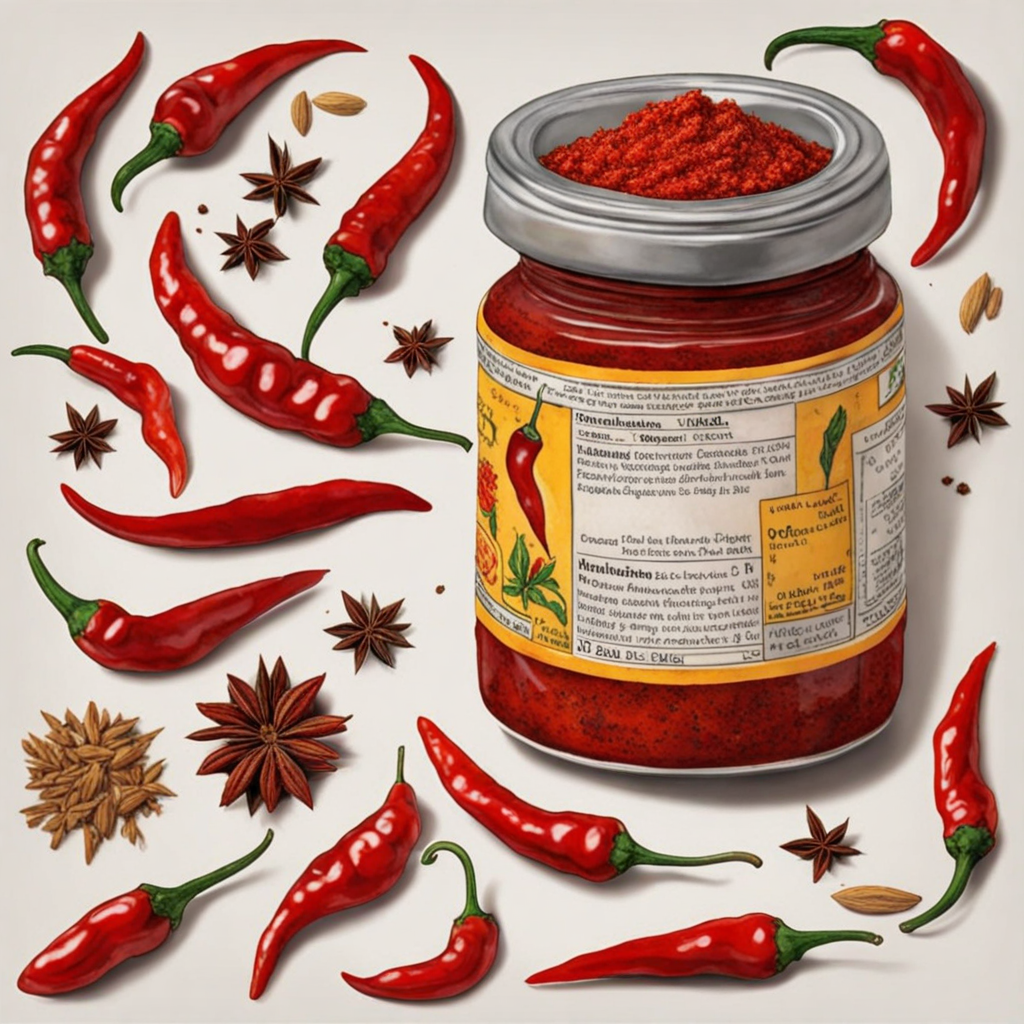Mloukhia
Mloukhia is a traditional Tunisian dish that offers a unique and rich culinary experience, distinguished by its deep green color and robust flavor. This dish is primarily made from the leaves of the jute plant, which are dried and ground into a fine powder. When cooked, the powder transforms into a thick, hearty stew that carries an earthy, slightly bitter taste, reminiscent of a mix between spinach and okra. The addition of spices, particularly garlic and coriander, enhances its flavor profile, creating a comforting dish that warms the soul. Typically, Mloukhia is slow-cooked with meat, usually lamb or beef, which infuses the dish with savory richness. The meat is simmered until tender, allowing it to absorb the aromatic qualities of the stew. The dish is often served with a side of crusty bread, perfect for soaking up the luscious sauce. The texture is both velvety and hearty, making each bite a delightful experience that showcases the dish’s unique ingredients. Mloukhia is more than just a meal; it’s a celebration of Tunisian culture and tradition. It is often enjoyed during family gatherings and special occasions, bringing people together over a shared love for this flavorful stew. The dish is usually accompanied by olives or a fresh salad, which adds a refreshing contrast to the rich Mloukhia. For those adventurous enough to try it, Mloukhia promises an unforgettable taste journey into the heart of Tunisia’s culinary heritage.
How It Became This Dish
The History and Cultural Significance of Mloukhia in Tunisia Mloukhia, a dish steeped in history and tradition, is a quintessential part of Tunisian cuisine that reflects the country’s rich cultural tapestry. Often made from the leaves of the jute plant, Mloukhia has become synonymous with Tunisian identity, serving not only as a beloved culinary specialty but also as a symbol of national pride. Origins of Mloukhia The origins of Mloukhia can be traced back to ancient times, with roots in the Mediterranean region. The jute plant, known scientifically as *Corchorus olitorius*, is thought to have been cultivated for thousands of years, with evidence of its use as a food source found in ancient Egypt. Historical texts suggest that it was a favored food among the ancient Egyptians, who recognized its nutritional benefits and medicinal properties. As the jute plant spread across North Africa, it found its way into the culinary practices of various cultures, including the Berbers and the Arabs. The introduction of Mloukhia to Tunisia is often attributed to the Arab conquest in the 7th century, which brought with it a wealth of agricultural knowledge and new ingredients. The dish began to evolve, integrating local flavors and cooking techniques, leading to its establishment as a central component of Tunisian cuisine. Cultural Significance Mloukhia holds a special place in Tunisian culture, regarded not just as a meal but as a tradition passed down through generations. The preparation of Mloukhia is often a communal affair, bringing families together to partake in a time-honored ritual. It is commonly associated with significant family gatherings and celebrations, particularly during Ramadan, weddings, and other festive occasions. The dish is characterized by its deep green color, a result of the finely ground jute leaves that give it a distinctive and rich appearance. The texture is thick and somewhat viscous, often likened to that of a stew. Mloukhia is typically served with lamb or beef, slow-cooked to tenderness, and is usually accompanied by rice or bread. The combination of flavors and textures makes it a hearty and satisfying meal. In Tunisian culture, Mloukhia is more than just sustenance; it represents resilience and adaptation. The dish is often associated with the concept of "moujahed," meaning to struggle or endure, reflecting the historical challenges faced by the Tunisian people. The act of preparing and sharing Mloukhia serves as a reminder of the strength and unity of families and communities. Development Over Time As Tunisia underwent various historical transformations, so too did Mloukhia. Under the Ottoman Empire, which ruled from the 16th to the 19th century, Tunisia experienced a significant culinary fusion. The Ottomans introduced new spices and cooking methods, enriching the flavors of traditional dishes, including Mloukhia. This era saw the incorporation of spices like coriander, cumin, and garlic, adding layers of flavor that have become characteristic of modern Mloukhia. During the French colonization in the late 19th and early 20th centuries, Tunisia faced both challenges and opportunities. The French influence on agriculture led to the introduction of new farming techniques and crops, which impacted the cultivation of jute. Despite the foreign domination, Tunisians maintained their culinary traditions, with Mloukhia remaining a staple food that provided comfort and continuity during times of upheaval. In the latter half of the 20th century, following Tunisia's independence in 1956, there was a resurgence of interest in national identity, and traditional foods like Mloukhia became a source of pride. As Tunisians sought to reclaim their cultural heritage, Mloukhia was celebrated not only for its flavor but also for its historical significance. Chefs and home cooks alike began to experiment with variations of the dish, incorporating local ingredients and modern cooking techniques while staying true to its roots. Modern Interpretations Today, Mloukhia continues to evolve while retaining its traditional essence. In contemporary Tunisian households, it is often prepared with a variety of meats, including chicken and even seafood in coastal regions, showcasing the adaptability of the dish to local tastes and ingredients. While the traditional version remains popular, younger generations are also experimenting with vegetarian adaptations, using the jute leaves as a base for salads and plant-based meals. The dish has also gained international recognition, with Tunisian expatriates and food enthusiasts promoting Mloukhia around the world. It is commonly featured in Tunisian restaurants abroad, where it serves as a gateway for many to experience the flavors of Tunisia. Social media has played a significant role in this globalization of Tunisian cuisine, with food bloggers and influencers showcasing their own takes on Mloukhia, thus introducing it to a broader audience. Conclusion Mloukhia is not merely a dish; it is a reflection of Tunisia's historical journey, cultural richness, and the resilience of its people. From its ancient origins to its modern interpretations, Mloukhia embodies the spirit of Tunisian culinary tradition, serving as a reminder of the past while embracing the future. As families continue to gather around tables to enjoy this beloved dish, they not only nourish their bodies but also strengthen their bonds, ensuring that the legacy of Mloukhia endures for generations to come. Whether enjoyed in the heart of Tunisia or on distant shores, Mloukhia remains a testament to the power of food in cultivating community and preserving cultural identity. Through every bowl served, it tells a story of heritage, adaptation, and the enduring love of shared meals.
You may like
Discover local flavors from Tunisia







